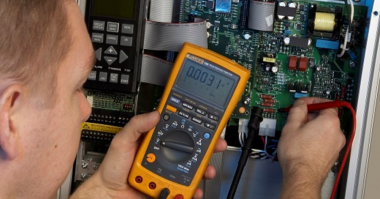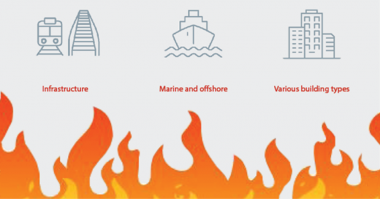Author: Cieana Detloff, Reporting for Empowering Pumps
Prior to attending the 2016 Fugitive Emissions Summit, I had the great pleasure of speaking with Mr. Mark Menzer, Director of Public Affairs for Danfoss North America. I asked him several questions about CO2 emissions and here is what he had to say:
Q1) Can you explain why reducing emissions is a “big deal”?
We have to produce enough energy to support human life on this planet. Yet, our current use of energy and the resulting emissions are creating changes in our climate that will have dramatic effects for future generations. Carbon dioxide is the greatest man-made contribution to climate change, which has been an area of political debate for decades. Yet with 195 countries having participated in the Paris Climate Conference (COP21) last December, the international community is fortifying their resolve to reduce CO2 emissions.
Q2) What can be done to reduce CO2 emissions?
Reducing carbon dioxide emissions around the world will require countries to do two things: utilize more sources of renewable energy and become more energy efficient. Becoming energy efficient isn’t just reducing the amount of energy we use, it also requires increasing our energy productivity. Consider the common home refrigerator, for example. The efficiency of this appliance has been regulated; and as a result, these every-day items have become bigger and better while using almost a quarter of the electricity than they used forty years ago. Energy productivity is about getting *more* out of the energy we use.
Energy productivity was a major topic of discussion at the recent Energy Efficiency Global Forum, where I moderated an executive panel that talked about existing opportunities to improve energy efficiency. There’s a great emphasis to look at the efficiency of systems in commercial and industrial buildings, which represent a large percentage of electricity use in the United States – nearly 40%. According to the UN Sustainable Energy for All initiative, “The buildings sector accounts for about one-third of global energy use and energy-related greenhouse gas emissions” (Source: http://www.se4all.org/content/12-cities-and-states-selected-accelerate-building-efficiency-across-globe).
Traditionally, regulating bodies have looked at the efficiency of individual components – pumps, heat exchangers and air conditioners in HVAC systems, for instance – but we need to look at the entire system in addition to using energy efficient components. Designing optimized systems where all the components work harmoniously together is a holistic approach to saving energy and reducing carbon dioxide emissions. In alignment with this philosophy, the Alliance to Save Energy (of which, Danfoss is a partner) has put together a Systems Efficiency Initiative to make the case for a systems approach within the buildings industry. The comprehensive report they released at EE Global in May explores ways to make buildings more energy efficient as well as investigates barriers to implementing system efficiency – particularly from an institutional and policy standpoint. We have to understand what is keeping builders, architects, and engineers from installing the most efficient buildings systems (HVAC, electrical, lighting, etc.) and think about what government policies would best incentivize building owners to put the most efficient systems into their buildings.
Q3) So we need to get efficient systems into new buildings; but what about existing buildings?
Energy used in cooling and heating systems can be reduced by up to 40% if the system utilizes modern technologies; but a building lasts 50 to 100 years, which means each year we are only changing over 1 or 2% of the building stock. At this rate, we are never going to have a timely reduction of CO2 emissions; so we must find ways to go into existing buildings to improve the efficiency of all energy systems.
In addition to installing and operating efficient building systems, district energy presents a huge opportunity to save energy. District energy provides energy through a loop to an entire “district”; so instead of each building having its own heating and air conditioning system, the system is centralized to distribute hot water to each of those buildings in the district to be used for heating or cooling. The beauty of this is that “waste heat” can be taken from one building, such as a supermarket, and used to heat nearby residences. Electric generating plants are incredibly large sources of “waste heat” that can provide a significant amount of heat for district energy loops. In a microgrid, both traditional and renewable energy sources can be used to each of their best advantage. Europe has benefitted from using district energy for years – pulling waste heat from power plants and industrial processes and redirecting it into district energy loops that support buildings in the surrounding community. If district energy was used everywhere it could be used, it would make a significant contribution to energy savings and would represent approximately 58% of the commitment to the COP21 pledges.
While I realize there are barriers to implementing district energy in the U.S., every state has to comply with our nation’s goal to reduce carbon dioxide emissions. States have the options of investing in renewables, like wind and solar, as well as improving energy efficiency. As an advocate of district energy, I certainly hope that more states include district energy in their implementation plans. I would like to see states incentivize the use of district energy, especially since there is proof that district energy really works. There are district energy systems out there, working well, so we must spread the word and let people know the opportunities we have to make our world a better place.
Q4) What do you hope will happen in the next 5 years?
I want to see major energy efficiency gains in existing buildings and industrial facilities, including water and waste water treatment and supply systems. Energy efficiency has happened slowly over the past several decades, and renewables really didn’t really start to make a significant contribution until a few years ago. Europe has had a ‘green” culture far longer than we have, but with the worlds’ governments coming together and making energy and emissions a priority, I believe we can look forward to seeing some major differences in how we use energy over the next five years. We are going to be making many of these changes while we deal with major water shortages, but I have great confidence in the upcoming generations – that they will continue to implement advanced technologies to change our future for the better.
Mark Menzer is Director of Public Affairs for Danfoss and has worked extensively in energy systems with HVACR manufacturers and utilities. He has a degree in mechanical engineering from NYU and completed his graduate studies at the University of Delaware.




